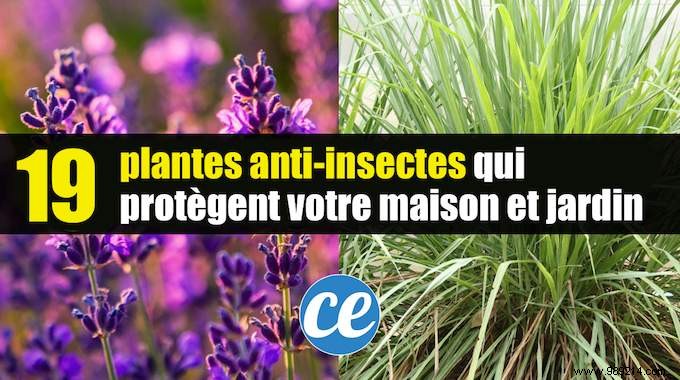
Every time I step outside, I attract insects .
It's simple. Me, I'm a real insect magnet!
Are you the same? I'm glad I'm not the only one then!
The good news is that you don't have to wage chemical warfare using off-the-shelf, toxic-laden sprays.
Fortunately, there are natural solutions to combat mosquitoes, gnats or flies.
To enjoy your evenings outdoors without being bothered, the trick is to use plants that naturally repel insects .
Once placed in strategic places of your terrace or your vegetable garden, you are quiet!
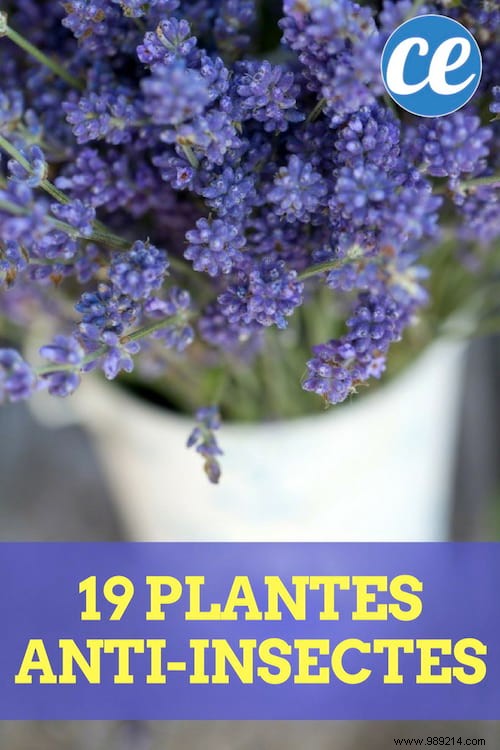
Indeed, some plants naturally contain essential oils that act as an insect repellent.
By the way, you can even use these plants to make 100% natural insect repellent sprays as explained here.
So, without further ado, here is the list of 19 plants that drive insects out of your home and garden . Watch:
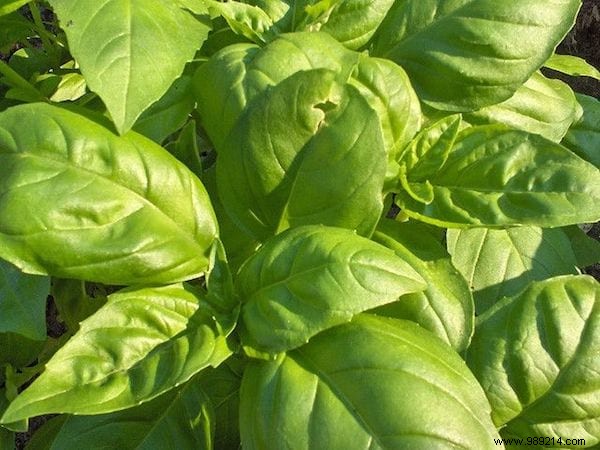
Basil is a natural repellent against flies and mosquitoes.
Plant your basil in flower pots and place them in strategic places.
For example, on window sills, near doors, but also outdoors, in places where you like to relax.
The little extra is that basil is a perfect herb to enhance salads, pork-based recipes and even in soups.
Basil can also be used to enhance the flavors of vegetables, including tomatoes, peppers and asparagus.
As an added benefit, you can also use fresh basil to make your own bug spray ! Here is the recipe:
Ingredients
- 125 to 175 g of fresh basil leaves (with stems)
- 12 cl of cheap vodka
- spray bottle
How to use
- Put the fresh basil leaves in a large jar and pour 12 cl of boiling water over them.
- Let the basil steep for several hours.
- Remove the leaves, and press them over the jar to collect the excess infused water.
- Add the 12 cl of vodka to the basil-water solution and mix well.
- Pour the mixture into a spray bottle and store in the fridge.
- Spray your bug spray on the skin when you go outside. Avoid applying it to the areas around the eyes, nose and mouth.
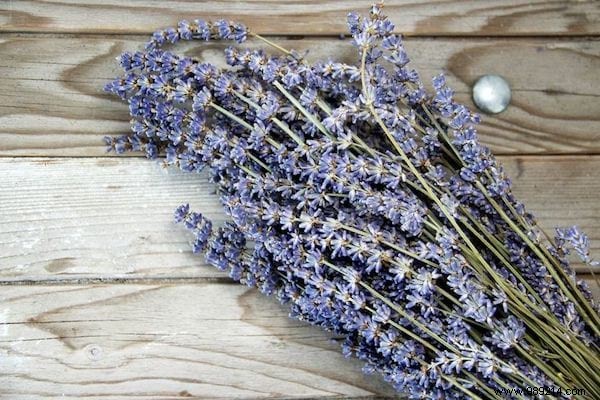
Lavender is a natural repellent against moths, fleas, flies and mosquitoes.
Used for centuries for its insect repellent properties, lavender gives off a sweet and pleasant scent in the home, especially in drawers and closets of clothes.
Most people love the scent of lavender. But mosquitoes, flies and other unwanted insects hate it!
How to use it
- To keep flies away from your home, make sprays with stems of dried lavender, and place them near doors and on window sills.
- Similarly, plant lavender in sunny spots in the garden and near entrances to your home.
- You can also use this lavender oil. Applied to the skin, it protects you from mosquitoes when you're gardening or spending time on your terrace.
- The other advantage is that lavender oil is known for its nourishing properties on the skin, as well as its calming effect to help you fall asleep more easily.
To discover: The 6 Incredible Uses of Lavender.
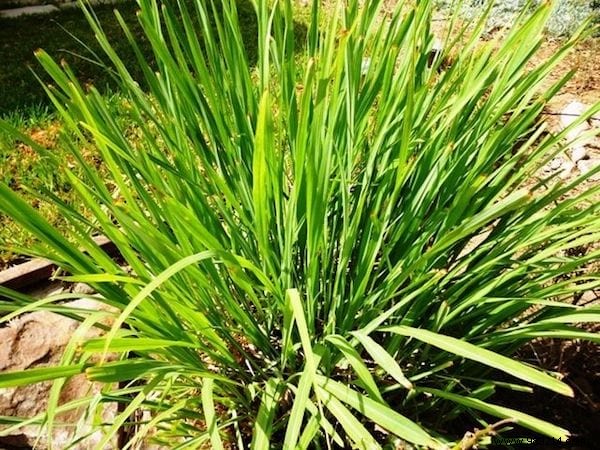
Citronella is a natural mosquito repellent.
Citronella essential oil is made up of citral, geraniol, myrcene, limonene and especially citronellal – natural compounds used in commercial mosquito repellent candles.
Indeed, the mosquito repellent properties of citronella are widely recognized. In fact, I'm sure you've heard of it before. During the summer, citronella candles are easily found in stores.
Lemongrass is a herbaceous plant that grows quickly, easily reaching 1.20 m in height and 90 cm in width, and this in a single season!
Know lemongrass is not just the name of a single plant. It is the generic name for plants in the Cymbopogon family. , which includes several types of lemongrass.
How to use
- In most climates, lemongrass is an annual , that is to say that its life cycle lasts only one year. It is grown in pots or in sunny, well-drained soil. Click here to discover our article that explains how to grow lemongrass and enjoy its benefits.
- Aromatic plant with a sweet lemony scent, its narrow leaves work wonders in the kitchen. Use lemongrass in chicken and pork recipes, or to flavor soups and salad dressings. Many Asian recipes also call for lemongrass.
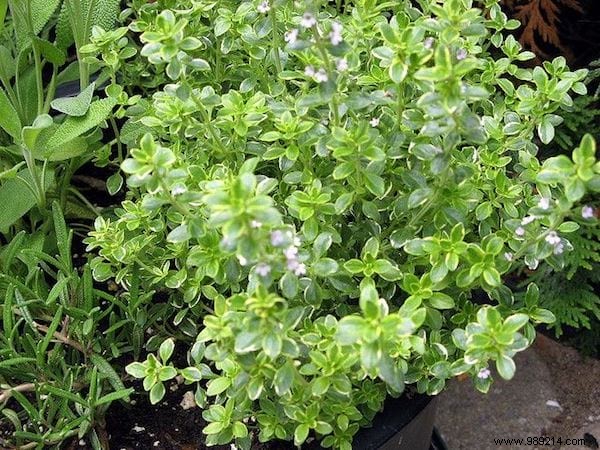
Lemon thyme is a natural mosquito repellent.
Undemanding, lemon thyme is a perennial plant, that is to say, it can live for several years and bear fruit several times in its existence.
It grows easily in dry, rocky and shallow soils.
Lemon thyme thrives just as well in your herb garden as it does in a pebble bed or garden border, as long as those spots get plenty of sunlight.
How to use it
Be aware that the plant itself does not repel mosquitoes! Indeed, to release the repellent oils of lemon thyme, you must first crush its leaves .
Don't worry, it's not that complicated. To do this, simply cut a few stalks of lemon thyme and rub them between your hands.
But before that, it is recommended to do a test to be 100% sure that this plant does not irritate your skin.
To determine your tolerance, rub crushed lemon thyme leaves on a small area of your forearm for several days.
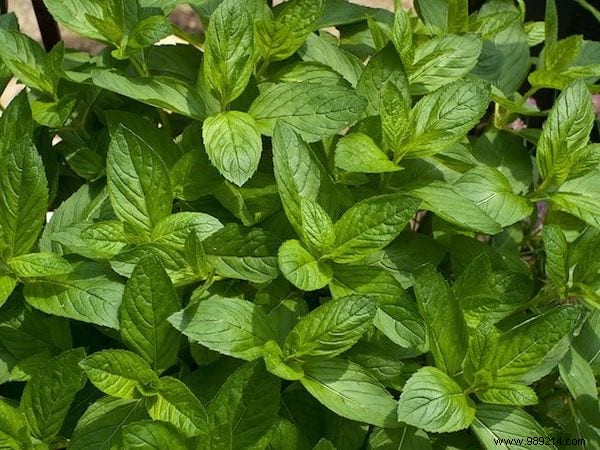
Mint is a natural mosquito repellent.
Mint spreads very aggressively in the garden. It is therefore best to grow it in a pot, unless you want it to invade the whole garden!
Indeed, once well established in a garden, it is very difficult to get rid of it.
Mint leaves are commonly used to flavor iced tea and other cold drinks.
We often forget it, but know that the aromatic properties of mint leaves are also present in its stems and flowers.
How to use it
- With little effort, the aromatic oils of mint are easily extracted. Mix these oils with apple cider vinegar and a little cheap vodka (or witch hazel flower water) to make a bug spray.
- To keep insects away from surrounding plants, plant the mint in pots and arrange them in strategic places in your garden or patio.
- To stimulate the growth of broccoli, cabbage and turnips, simply add a few sprigs of mint to their mulch.
To discover: The 3 virtues of mint that you don't know.
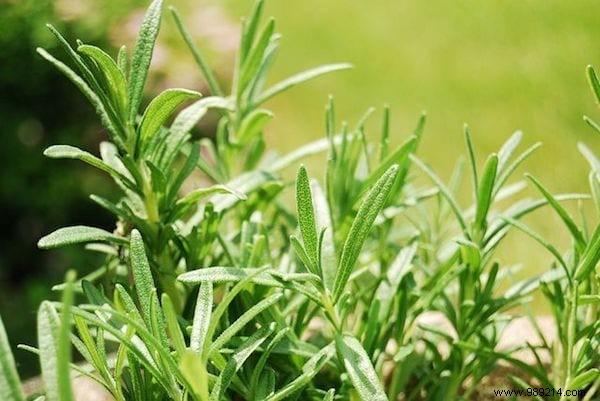
Rosemary is a natural repellent against mosquitoes and many other insect pests of vegetable plants.
First, know that there are many varieties of rosemary.
Rosemary can be grown both in pots on your patio and in your herb garden.
But it can also be planted in flowerbeds, as some varieties are quite massive.
Very aromatic, chefs love using rosemary in the kitchen… as much as insects hate it!
How to use it
Both the plant itself and its cuttings are effective repellents. You can use them to make homemade bug spray. The recipe is simple:
- Boil a quarter of dried rosemary in 1 liter of water, for 20 to 30 min.
- Filter the liquid into a large container of at least 2 litres.
- Add 1 liter of cold water.
- Put a lid on your container and store it in the refrigerator.
- When you go outside, put the insect repellent in small spray bottles.
- When refrigerated liquid no longer smells strongly of rosemary, throw it away.
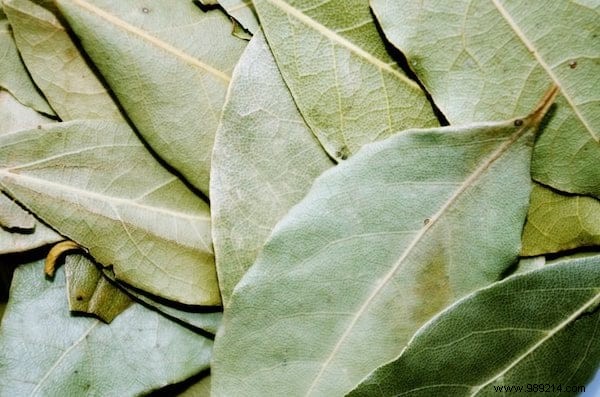
Bay leaves are a natural fly repellent.
And if you grow this plant in your garden, you'll never have to buy dried bay leaves again to spice up your soups and roasts.
Simply pick fresh leaves from the garden when you need them in the kitchen.
How to use
- Put bay leaves and rosemary in a bowl and place it on the counter, next to the trash can, and wherever there are flies.
- Mix 30 drops of mint essential oil in 25 cl of water and spray around the house. Check out the trick here.
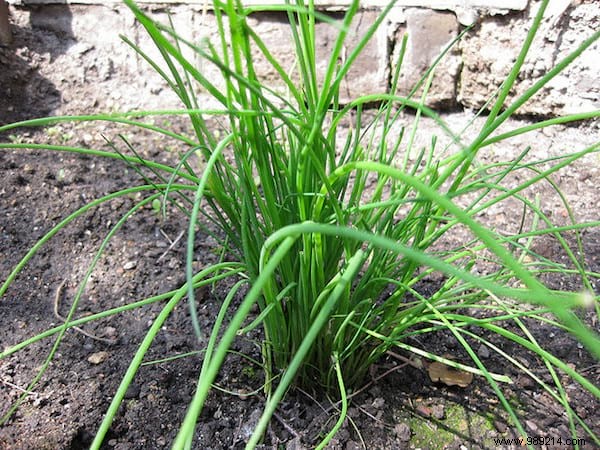
Chives are a natural repellent against insect pests in the vegetable garden.
Which insects?
In particular the carrot fly (Psila rosae ), the Japanese beetle (Popillia japonica ) and aphids.
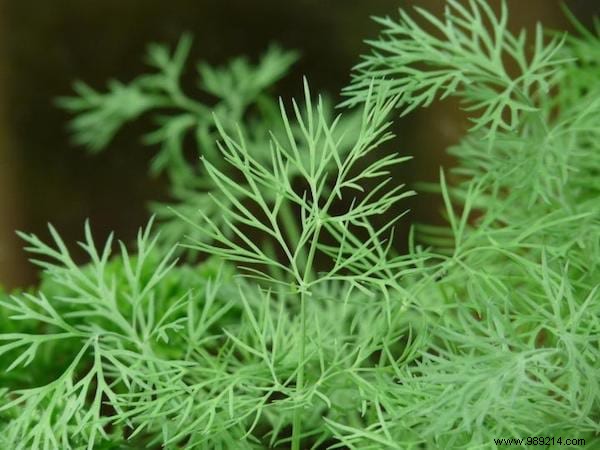
Dill is a natural repellent against many insect pests.
In particular aphids, the squash bug (Anasa tristis ), red spider mites (plant mites of the family Tetranychidae ), cabbage looper (Trichoplusia ni ) and tomato hornworm (Manduca quinquemaculata ).
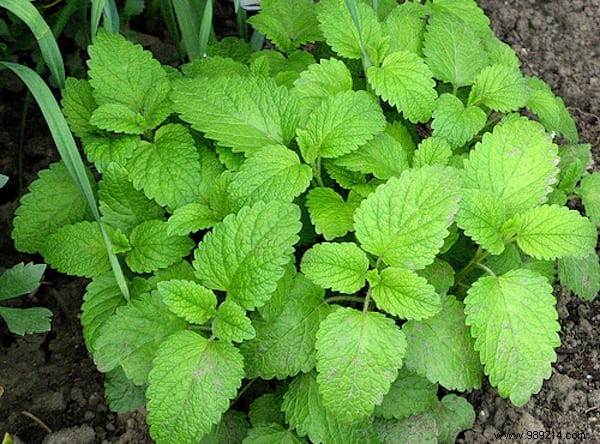
Lemon balm is a natural mosquito repellent.
If, like me, you keep getting bitten by these insects, consider planting lemon balm in your garden.
Pot them also in strategic places in your home, such as around windows and doors.
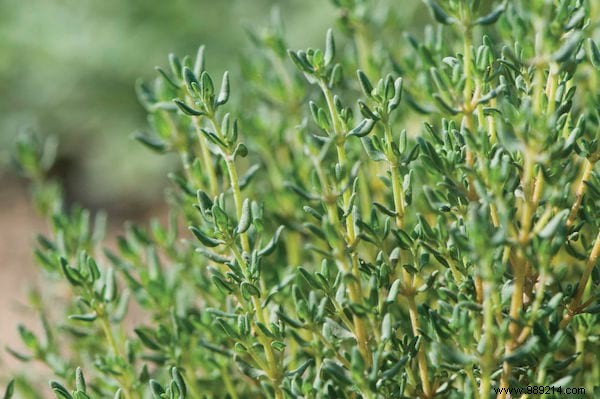
Thyme is a natural repellent against many insects.
This is the case for whiteflies (whiteflies), cabbage looper, cabbage maggot (Delia radicum ), the tomato fruitworm (Helicoverpa armigera ), the tomato hornworm and the white turnip (Pieris rapae ).
It is therefore essential to plant thyme if you have a vegetable patch in your garden.
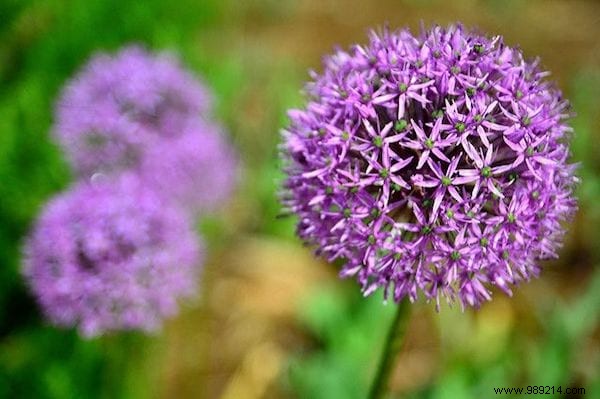
Ornamental garlic (genus Allium) is a natural repellent against slugs, aphids, carrot flies and tomato fruitworms.
Plants of the Allium family , such as the spectacular Allium giganteum , form giant balls of starry flowers perched on long stems.
These plants, also called ornamental garlic, are known for their powerful repellent properties.
How to use it
- Planting beautiful, tall alliums in your vegetable garden is an easy way to repel many insect pests, including aphids, carrot flies and tomato fruitworms.
- Plants in your vegetable garden can benefit from the insect repellent properties of alliums planted nearby, including:tomatoes, peppers, potatoes, cabbage, broccoli, kohlrabi and carrots.
- Alliums are also known to keep aphids away from roses.
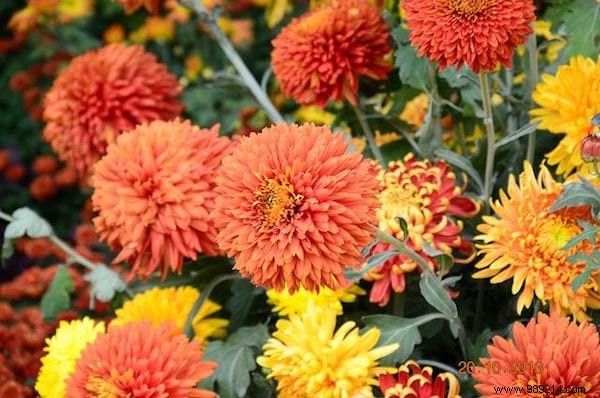
Chrysanthemums are a natural repellent against many varieties of insect pests.
The scent of chrysanthemums is known to repel cockroaches, ants, Japanese beetles, ticks, silverfish (Lepisma saccharina ), lice, fleas, bedbugs, red spider mites and root-knot nematodes (Meloidogyne ).
How to use them
- Chrysanthemums make an ideal companion plant to protect your vegetable garden from insect pests.
- Its secret ingredient is pyrethrin. The effectiveness of pyrethrin in killing harmful insects is formidable. In fact, it is one of the main ingredients of commercial garden insecticides. It can also be found in bug sprays, pet shampoos and aerosol cans.
- You can make your own insecticidal spray (i.e. kills insects, not just keeps them away) from chrysanthemum flowers. On the other hand, be aware that the pyrethrin that is extracted can be carcinogenic for humans. So, take special care if you use it in this form, and make sure you know the risks.
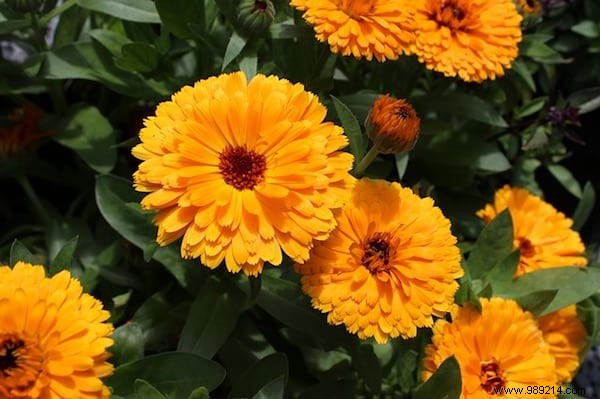
Marigolds are a natural repellent against aphids, mosquitoes… and even rabbits!
Because they repel nematodes, marigold roots are well known to farmers and gardeners.
Note, however, that this quality of the roots takes a year to take effect.
How to use them
- Marigold is an easy-to-grow annual plant that adapts to all soils.
- Plant marigold either at the edge of your beds or scattered in your vegetable garden, as it is known to stimulate the growth of many plants , especially roses.
- Even though it is easy to grow marigolds in sunny places, be aware that marigolds fear gray rot (Botrytis cinerea ), several varieties of leaf spots, powdery mildew (powdery mildew), humidity and also root rot.
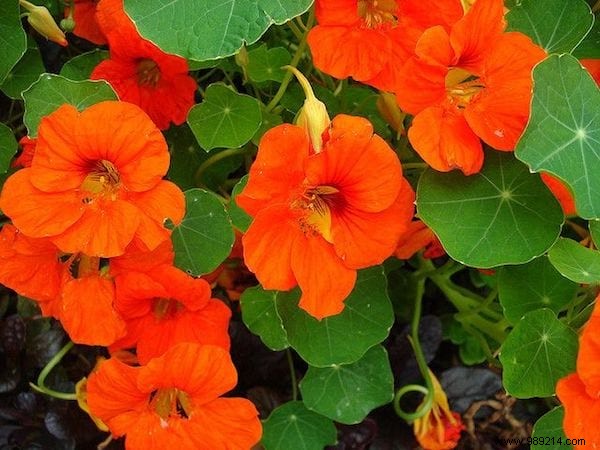
Nasturtiums are a natural repellent against whiteflies, squash bugs, aphids, many beetles and cabbage loopers.
Nasturtiums are the perfect example of a companion plant.
If you do not yet know plant companionship , know that this is an easy technique known to gardeners to ensure the health and vitality of your vegetables and aromatic plants.
It consists of growing complementary plants next to each other. We explain everything in this article.
How to use them
- Nasturtiums naturally release an airborne chemical compound that repels predatory insects. As a result, this not only protects the nasturtium, but also neighboring plants.
- Because they repel a large number of insect pests, nasturtiums are ideal for planting at the edge of your vegetable garden to protect your vegetables, especially tomatoes, cucumbers, kale, kohlrabi, cabbage jumper (Brassica oleracea ), broccoli, cabbage and radish.
- But rest assured, because nasturtiums do not repel the most effective of pollinators:the bumblebee.
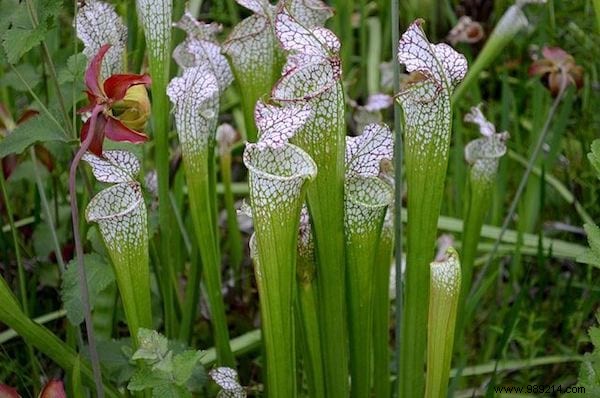
Petunias are a natural repellent against aphids, tomato hornworms, asparagus leaf beetles, leafhoppers and squash bugs.
In the vegetable garden, petunias make excellent companion plants. In fact, some people consider them Mother Nature's most effective pesticide.
Petunias are extremely common. This is mainly thanks to their wide variety of vibrant colors, their ease of maintenance and because they can be grown in borders, in planters or hanging.
How to use them
Plant them in a sunny location near garden vegetables and herbs, including beans, tomatoes, peppers and basil.
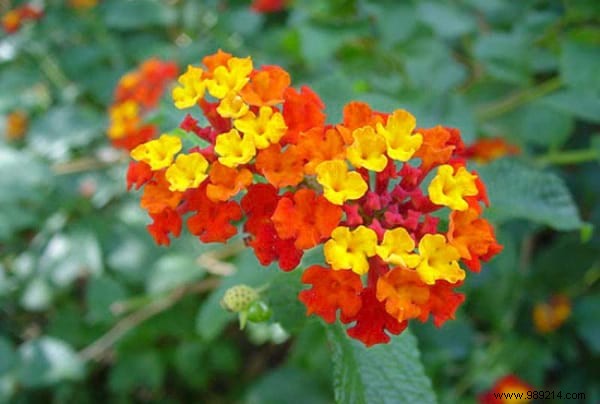
Lantanas are a natural mosquito repellent.
Consider planting some in your garden or in pots around the windows of your house to repel mosquitoes.
Not only are they beautiful flowers, but they also keep insects away from you.

Pitcher plants attract insects, drown them and digest them.
They are part of the largest family of carnivorous plants, the Sarracenia .
Its tube-shaped leaves, called "pitchers", contain a liquid that attracts and drugs insects.
The inner walls of the urns are covered with downward-sloping hair, which prevents insects from climbing up.
Thus, once inside, the insects drown and are digested by the plant.
Favorite prey of pitcher plants are ants, flies, wasps, bees, beetles, slugs and snails.
How to
- In the wild, pitcher plants grow in peat bogs. Thus, plant them in a sunny location but in moist soil, a difficult combination for home gardeners.
- The easiest way is to grow them in a pot, and put the pot in a saucer filled with water. But be careful not to overwater the substrate, which just needs to stay moist.
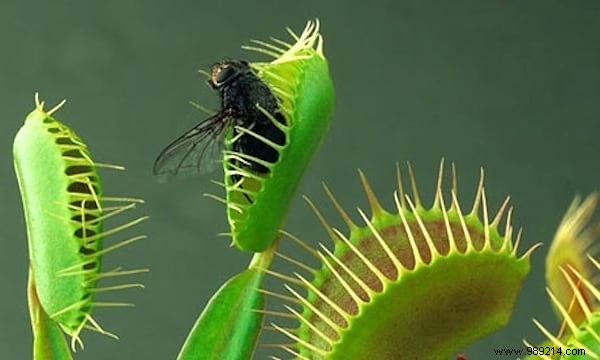
The Venus fly trap eats flies, but also other insects such as ants.
There you go, you now know the plants that naturally drive insects out of your home and garden :-)
Be aware that simply having insect repellent plants in your garden is not going to guarantee that this space will be totally rid of pests.
"There hasn't been enough research in this area yet to confirm that," says Dr Bodie Pennisi, lecturer and specialist in landscape spaces at the University of Georgia, USA.
"The essential oil content of plants is not enough to provide 100% protection, of course."
But what is certain is that you will have much less insects using these plants says Dr. Pennisi.
But no one has done scientific research to find out exactly how many plants to plant, and how far apart, to repel insects most effectively.
The best tip against insects, especially mosquitoes, is to first take care not to attract them.
"One of the best things you can do to reduce mosquito populations, is eliminate areas of standing water " advises Dr. Pennisi.
Why ? Because this is where mosquitoes breed en masse. Check out our tip here.